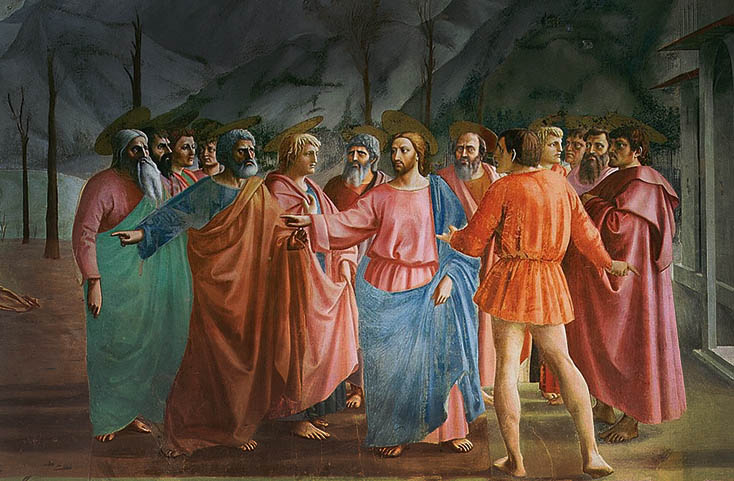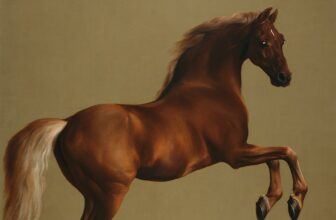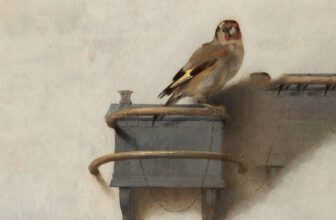
The Participant: The Tribute Money Painting by Masaccio
Among the masterpieces of the Italian Renaissance, “The Tribute Money” by Masaccio stands as a pivotal moment in Western art history. Painted around 1425, this fresco is located in the Brancacci Chapel of the Santa Maria del Carmine church in Florence, Italy. The work is not only a religious narrative but also a technical and conceptual leap forward in painting. It introduces groundbreaking use of linear perspective, chiaroscuro (light and shadow), and a unified composition that would influence generations of artists including Michelangelo and Raphael.
This article delves deep into the analysis, meaning, narrative structure, symbolism, and style of The Tribute Money, shedding light on why this painting remains one of the most revered in Renaissance art.
Who Was Masaccio?
Masaccio, born Tommaso di Ser Giovanni di Simone in 1401, was a pioneer of Early Renaissance painting. Despite his short life, he died around 1428 at just 26 years old, Masaccio profoundly influenced the trajectory of Western art. Unlike his Gothic predecessors who favored stylized figures and ornamental detail, Masaccio embraced naturalism, realism, and human emotion. He collaborated with artists like Masolino da Panicale, and it was in the Brancacci Chapel that his genius truly flourished.
The Setting: The Brancacci Chapel
Commissioned by the wealthy Florentine merchant Felice Brancacci, the fresco cycle in the Brancacci Chapel was intended to honor St. Peter, the patron saint of the family. Masaccio was tasked with painting scenes from Peter’s life, working alongside Masolino. However, Masaccio’s work, particularly The Tribute Money, far outshined that of his colleague, marking a transformative point in the history of art.
Overview of The Tribute Money
Visual Description
The Tribute Money depicts a narrative from the Gospel of Matthew 17:24–27. The scene takes place in a calm, classical setting with architectural and naturalistic elements. The composition includes three distinct episodes of the story unified within a single visual frame:
Center: Jesus is confronted by a tax collector and instructs Peter to find a coin in a fish’s mouth.
Left: Peter, following Jesus’ command, catches a fish and retrieves a coin from its mouth.
Right: Peter pays the tax collector.
This technique, called continuous narrative, allows multiple moments in time to coexist in one frame, a hallmark of Renaissance storytelling in art.
Narrative Meaning and Religious Context
The story centers on the payment of the temple tax. Jesus is asked whether he pays the tax. To avoid offense, he instructs Peter to catch a fish, within which he miraculously finds a coin to pay the tax.
The theological implications are rich. While Jesus, as the Son of God, is technically exempt from the tax, he chooses to comply to avoid conflict. This reflects the Christian ethos of humility, civic responsibility, and divine providence. It affirms the duality of Christ’s identity, both divine and obedient to earthly law.
This theme had particular civic resonance in Florence, where taxation and civic duty were central topics. The painting thus serves not only as a spiritual allegory but also as a subtle commentary on contemporary civic life.
Symbolism and Iconography
Masaccio embeds the painting with symbolic layers that enrich its meaning:
1. The Coin in the Fish’s Mouth
The central miracle of the story symbolizes faith and divine provision. The idea that a mundane act (fishing) yields a miraculous solution (the coin) reinforces belief in God’s subtle yet powerful interventions in daily life.
2. Saint Peter as a Civic and Spiritual Leader
Peter’s central role in this scene, acting on Christ’s command, performing the miracle, and making the payment, reflects the apostolic authority and the foundation of the Church. In Florence, where civic pride and the Church were deeply intertwined, Peter symbolizes both obedient servant and wise leader, linking religious virtue with civic responsibility.
3. Architectural Background
The classical building in the background, often identified as a Roman temple, underscores the Renaissance fascination with antiquity. It also hints at the blending of spiritual and civic spaces, a reflection of how Renaissance humanism embraced both religious piety and Greco-Roman heritage.
4. Use of Halos
The subtle rendering of halos in perspective was revolutionary. Instead of flat gold disks, Masaccio foreshortens them with light transparency, integrating them naturally into space. This technique respects both divine presence and optical realism, reconciling heaven and earth in visual terms.
Artistic Style and Innovations
1. Linear Perspective
Masaccio’s use of linear perspective, developed around the same time by Filippo Brunelleschi, is one of the key innovations in The Tribute Money. The vanishing point is behind the head of Christ, drawing the viewer’s eye to the central figure and reinforcing His spiritual centrality.
The perspectival lines create a believable, three-dimensional space, a radical departure from the flat, symbolic space of Gothic painting. This spatial depth allows the viewer to almost enter the painting, engaging with it not just spiritually but physically and intellectually.
2. Chiaroscuro and Light Source
Masaccio was among the first to use chiaroscuro (the contrast of light and dark) to model volume. The consistent light source from the right side of the chapel corresponds to the actual physical lighting in the chapel, further integrating the painting with its architectural environment.
This technique gives the figures a solid, sculptural quality, making them appear tangible and weighty, unlike the ethereal figures in earlier medieval works.
3. Human Emotion and Expression
The figures are rendered with a profound sense of psychological realism. Their gestures and expressions convey a range of emotions, curiosity, confusion, trust, obedience, and resolve, without theatrical exaggeration. Christ’s calm gesture, Peter’s dynamic action, and the tax collector’s assertiveness all contribute to a rich emotional narrative.
What Is Happening in the Painting?
To break down the three episodes more clearly:
Center Scene: The tax collector, dressed in short red tunic, asks for the temple tax. Christ gestures to Peter, telling him to go to the sea to find a coin in the mouth of a fish.
Left Scene: Peter bends over the water and pulls a coin from the fish’s mouth. This moment emphasizes faith in action, obedience leading to miraculous provision.
Right Scene: Peter gives the coin to the tax collector. This resolution affirms civic responsibility and peaceful resolution.
Masaccio’s genius lies in weaving these separate actions into a seamless composition, with the figures interacting naturally across space and time.
Type and Genre of Art
The Tribute Money is a fresco, a technique of mural painting executed upon freshly laid (“wet”) lime plaster. Pigments merge with the plaster, making the artwork part of the wall surface. This gives the painting durability and brilliance.
As for genre, the painting is both religious art and history painting, the highest genre in the academic hierarchy of painting. It reflects biblical narrative while engaging with philosophical and political themes of its time.
Masaccio’s contributions cannot be overstated. The Tribute Money became a benchmark for perspective, narrative integration, and naturalism. Artists like Leonardo da Vinci, Michelangelo, and Raphael would study Masaccio’s work closely. Michelangelo, in particular, was said to have copied Masaccio’s figures as part of his early training.
In many ways, Masaccio set the stage for the High Renaissance, where the ideals he pioneered, perspective, realism, anatomy, emotion, were pushed to their fullest expression.
Where Is The Tribute Money Painting Today?
The Tribute Money remains in its original location, the Brancacci Chapel in the Church of Santa Maria del Carmine in Florence, Italy. Despite suffering from centuries of wear, restoration efforts, particularly in the 20th century, have preserved its beauty and detail.
The chapel itself is now a major destination for art historians, students, and travelers alike, often referred to as the “Sistine Chapel of the early Renaissance.” Alongside other scenes by Masaccio and Masolino, The Tribute Money continues to educate and inspire.
The Tribute Money by Masaccio is far more than a religious scene painted on a chapel wall. It is a revolutionary work of art that changed the course of Western painting. Through its realistic portrayal of human figures, mastery of perspective, and spiritual narrative, the fresco stands as a testament to the power of art to convey complex truths about faith, society, and the human condition.
Masaccio managed to capture a profound religious message within a visually stunning and technically groundbreaking work. In doing so, he laid the foundation for the Renaissance ideals of clarity, realism, and intellectual depth in art.
Today, The Tribute Money remains a vital part of our shared cultural heritage, a silent yet eloquent conversation across centuries about belief, duty, and artistic excellence.




